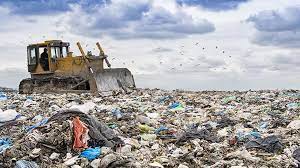At The Moment, There Are Three Main Types Of Landfills
Dangerous waste, trash from industry, and city trash Each takes a different kind of trash and uses different methods to lessen its effect on the environment. “Green waste” is a new type of landfill that lets organic wastes be thrown away in a controlled way.
Municipal Solid Waste Landfills
If you put trash in a trash can, it will probably end up in a landfill for municipal solid waste (MSW). Most people think of one of these places when they think of a dump. Even though they are the most common, the general public does not always have access to them.
MSW landfills often have some of the strictest safety and monitoring rules because they deal with most residential waste. This includes everything from used tissues to roll-off garbage full of stuff from a basement cleanout. Most of the time, these rules include restrictions on the liner, how the landfill works, how groundwater is monitored, and how to close it down.
So, how do dumps for MSW work? Layers are the key to everything. Today’s landfills have four layers a liner, a drainage system, a system for collecting gas, and the trash itself. Each of these levels is constantly checked to ensure that the workers and the environment are safe at the landfill.
Places To Put Industrial Trash

If it seems clear what a landfill is, that’s because it is. A landfill is the best place to get rid of this kind of industrial trash. These landfills can take any solid industrial waste, but most people use them to eliminate construction debris. This is why they are often called “C&D” landfills.Concrete, wood, asphalt, gypsum, metal, and bricks are all building materials (doors, countertops, cabinets, etc.)
But C&D landfills are often used as material recovery facilities (MRFs) and places to store construction debris.
To do this, the people who work at the landfill pile up the items brought in and sort them to see which ones can be used again and which ones should be thrown away.
The recyclable materials are given to local resale shops or companies that specialize in building with used materials or bought from them. Also, the material recovery plant may find new uses for the materials locally, such as turning wood into mulch.
Places To Put Dangerous Waste
For reasons that should be clear, hazardous waste dumps have the most strict rules and designs. They are made to store dangerous wastes in a way that makes it almost impossible for them to get into the environment.
Leachate collection and removal systems with two liners systems for detecting leaks controls for run-on, run-off, and wind dispersion programs to make sure construction quality.
In addition to these architectural requirements, hazardous waste dumps are often inspected several times a year to ensure they follow the law and meet the highest standards.
Dangerous trash isn’t picked up at the curb and is only sometimes if ever, allowed in dumpsters with advance notice.
Green Waste Disposal Sites
Even though the EPA hasn’t given these dumps legal power, several towns are starting to give organic waste a place to break down on its own. These composting facilities are becoming more popular because most regular landfills and transfer stations don’t take as much organic waste as fruits and vegetables, especially yard waste.
“Some recycling centers will take it, but not all,” Morris said. The government in your area is in charge of everything.
Branch ends, weeds, dead leaves, and mulch. Food scraps, flowers, and grass clippings break down on their own. The main goal of green garbage dumps is to save space in other MSW landfills by keeping things out that are meant to break down on their own.
The EPA’s current studies show that composting landfills are meeting this goal. In 2017, 24,420-yard trimmings went to compost, and 8,650 tones went to landfills. In 1990, those numbers were 4,200 tones and 25,560 tones, respectively.

